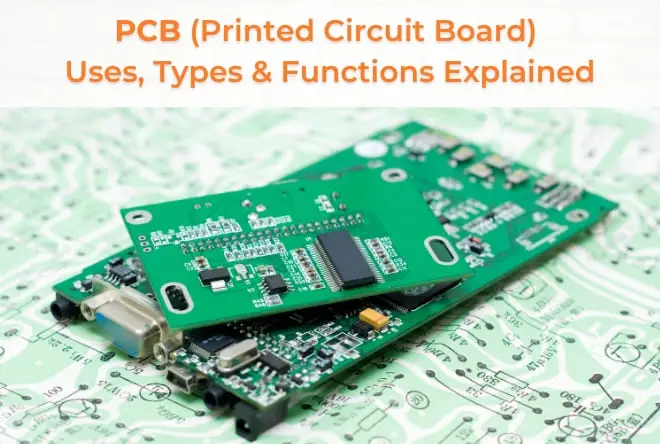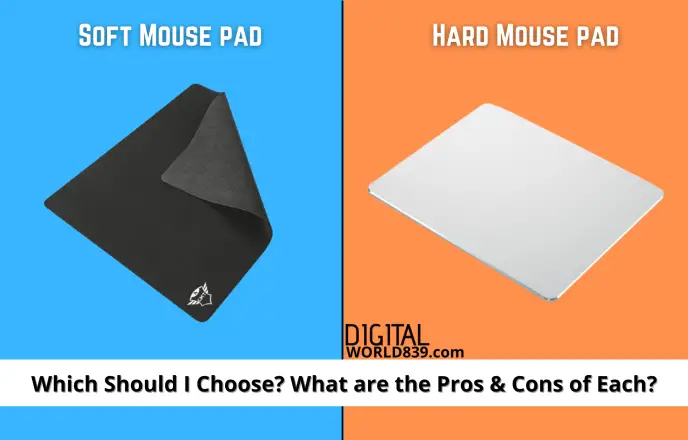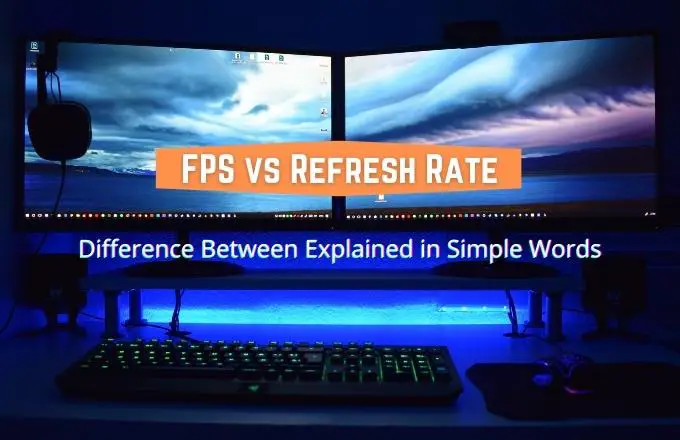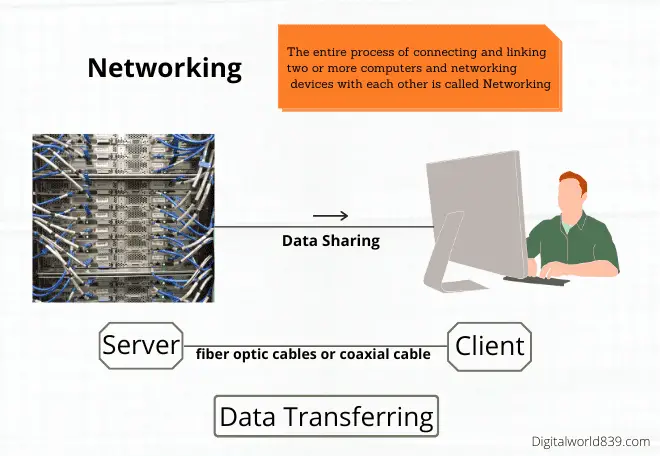At the heart of nearly every electronic device lies a printed circuit board (PCB). From smartphones to satellites, circuit boards are the platforms that bring electronic systems to life, enabling the technology that powers our modern world.

What is a Circuit Board used for?
A circuit board, commonly referred to as a PCB or printed circuit board, is a foundational element in modern electronics. It’s not just a piece of hardware; it’s the backbone that interconnects various electronic components within a device.
Imagine it as a tailor-made suit for electronic circuits – fitting perfectly to ensure seamless communication between different parts. The term “printed” comes from the manufacturing process where conductive pathways are etched or “printed” onto a non-conductive layer (base).
Circuit boards are designed to carry out multiple tasks, from simple to highly complex, such as routing electrical signals to various components to execute functions specific to electronic devices.
Without PCBs, our advanced technological world would be vastly different, as they are integral to the operation of nearly every electronic device out there – from smartphones and laptops to medical instruments and automotive control systems.
Basic Components of a Circuit Board
In every PCB, you’ll find several vital components that make up its architecture:
- Conductive pathways, also known as traces, generally made of copper, facilitate the flow of electric current between different points on the board.
- Solder masks, coat the board’s surface, safeguard against short circuits, and ensure soldering is precise during printed circuit board assembly. It is usually green, but today, computer motherboards come in different colors like grey, red, or even white.
- Silkscreen layers provide valuable information, such as component labels and test points, which are essential during the troubleshooting and repair process.
- Mounting areas for varied components (such as inductors, resistors, transistors, capacitors, microchips, and sockets) link them electrically through the conducting paths.
The innovative layout of PCB allows it to function – be it controlling an LED display or managing complex computations within a computer. Fundamentally, these boards are not just mere platforms but intricately designed conductors of electrical synergy.
Functions of a Circuit Board
1. Power Distribution
Circuit boards are critical in distributing power to different components attached to the base.
Motherboards in computers, for example, are constructed as multilayer PCBs that efficiently channel electricity from power supplies to key components like the CPU, RAM, and GPU. The proper distribution of power ensures that devices operate smoothly without overheating or power surges, which could otherwise lead to damage or failure.
2. Signal Transmission
Signal transmission is another vital function of a PCB, especially in the case of High-Frequency PCBs, which can transmit signals over one GHz. The conductive pathways etched onto these boards are carefully designed to maintain signal balance.
Factors such as signal wastage and interference play a significant role in how effectively a circuit board transmits signals, impacting the device’s overall performance.
3. Circuit Protection
To prevent issues like short circuits, which can significantly damage a device’s functionality, circuit boards are equipped with protective mechanisms.
By applying concepts like voltage division, Ground, and combining resistive materials, a circuit board can ensure that electrical current flows safely, averting potential hazards like overheating or component failure.
4. Circuit Control
A circuit board’s control over a device’s functionality cannot be overstated. It facilitates the direction of current and manages the Operational Parameters (connections) of each electronic component to perform specific tasks.
Using strategies to reduce Loop Area in signal paths, circuit boards also help maintain EMC performance by minimizing electromagnetic interference, which could otherwise disrupt device operation.
In short, a circuit control system ensures that all components work together efficiently.
5. Data Processing
Data processing lies at the core of electronic devices, facilitated by the integrated circuits and processors housed on PCBs. Whether a device is carrying out complex computations or simply executing a series of instructions, the circuit board is the stage on which this data processing performance unfolds.
Especially a High-frequency type of PCB is engineered to handle rapid signal transmissions, ensuring swift and accurate data processing.
6. Circuit Troubleshooting
Circuit boards are not solid-proof against issues; hence, troubleshooting provisions are built into their design. From identifying faulty solder joints to rectifying breaks in the circuit that prevent power from reaching the load.
Effective PCB design allows for easier diagnosis and resolution of problems, minimizing downtimes and extending the lifespan of the electronic unit.
Types of Circuit Boards
Understanding the different types of circuit boards is crucial for learning their functionality and applications across a wide range of devices. Now, let’s delve into the main categories these boards can be classified into:
1. Single-Sided Circuit Boards
Single-sided PCB is the most simple type of circuit board design. They consist of components and conductive copper tracks on one side of the board only, making them cost-effective and well-suited for mass production. Single-sided boards are typically used in simple electronics where complexity is not required.
Composition: These boards consist of a substrate layer, typically made of fiberglass; a copper layer is then added for conductivity, and a protective solder mask, usually green. On the copper side, PCB manufacturers strategically position electrical components, and the traces connecting these components allow for electrical flow.
2. Double-Sided Circuit Boards
Double-sided boards, also known as double-layer PCBs, have conductive copper layers on both sides of the board. This mechanically designed layer enables complex and denser circuit patterns, allowing more components to be included compared to single-sided boards.
They utilize through-hole technology or surface mount technology, sometimes both in tandem, to allow for connections across both sides of the board.
This method is more costly compared to the single-sided approach. Regardless, its functionality is significantly greater, making double-sided PCBs ideal for more complex devices like smartphones and laptops.
3. Multi-Layer Circuit Boards
Multi-layer circuit boards take complexity to another level with more than two layers of copper conductive paths. Such boards are laminated/placed on each other with an insulating layer in between, allowing for large and intricate board designs.
These boards can have up to 30 or more layers, although the most common ones used are typically four, six, or eight layers, depending on the device’s requirements.
What makes multi-layer PCBs special is their ability to house a higher number of components in a denser space while maintaining functionality. The layers are separated by insulation to prevent any electrical interference. The integration of vias enables seamless connections across these layers.
And yes, these boards are necessary for advanced electronics, such as computers and medical machinery, which demand sophisticated circuitry.
4. Flexible Circuit Boards
Flexible circuit boards bring a different innovation to the table. Made from a durable, high-temperature plastic-like material, these PCBs can bend and fold without causing damage to the integrated circuits or the components on the board.
This flexibility is particularly beneficial in tight spaces or devices where the board must fit to a specific shape—like cameras, wearable technology, and various automotive components. Furthermore, their capacity to withstand high temperatures adds to their reliability and widens the scope of use.
5. Rigid-Flex Circuit Boards
Rigid-flex circuit boards are a unique hybrid that combines the robustness of rigid PCBs with the flexibility of flex circuits. They offer the best of both worlds: the rigid sections provide stability and space for additional components, while the flexible areas allow for bending and folding.
In structure, these boards integrate multiple layers that connect rigid PCBs and flex circuits, creating a single system. This sophisticated design is critical for complex, space-constrained devices that require precise and rugged circuitry, such as in aerospace and military technology.
With rigid-flex boards, one can achieve a more streamlined and reliable electronic design, reducing the need for multiple connectors and wires, which can simplify the overall device assembly process.
Conclusion
Circuit boards are the backbone of modern electronics, integral to everything from smartphones to satellites. They’re not just components but the platforms enabling complex interactions that power our devices. As technology continues to advance, so too will the capabilities of these essential boards.
Moreover, the types of PCBs cater to the distinct needs of the devices they’re used in; as devices evolve, so do the circuit boards that bring them to life, allowing for ever more intricate and powerful electronics to enhance our daily lives.
It’s clear that their role is only set to expand, becoming more sophisticated as they adapt to new challenges in electronics. I’ve seen firsthand the evolution of circuit boards, and I’m excited to witness their ongoing transformation as they continue to shape the future of technology.
Related Posts:
- What is a TPM on a motherboard? What it is For?
- How long do Power Supplies Last? (Average Lifespan)
- Ways to Test Ethernet Cable without Tester
- 4 Ways to Open the Registry Editor (on any Windows!)
- TLC or TLC – Which Type of SSD Memory is Better to Choose?




